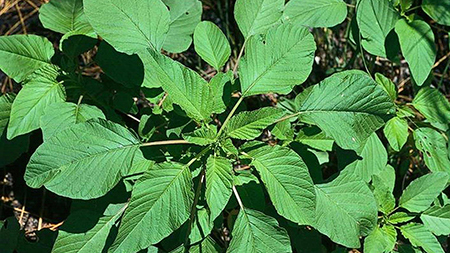This year more Missouri farmers than ever before may have to contend with Palmer amaranth, an aggressive, persistent and destructive weed. Southeast Missouri farmers have long fought this scourge, but for the rest of the state, it’s a new threat. Neighboring states have seen dramatic increases in the presence of Palmer amaranth, and Missouri may not be far behind.
Reports from nearby states indicate Palmer amaranth has been found in fields seeded for pollinator habitat. This is cause for concern for Missouri farmers. Palmer amaranth propagates rapidly and is nearly impossible to eradicate once it is established.
In recent years, the U.S. Department of Agriculture (USDA) has promoted the creation of habitat for honey bees and other pollinators because of the important role these species play in agricultural production. Some USDA programs, such as the Conservation Reserve Program, offer opportunities for farmers to develop pollinator habitat.
In addition to pollinator habitat seed, migratory waterfowl and used farm machinery are among potential vectors for its spread. Missouri’s Natural Resource Conservation Service (NRCS) issued a bulletin and established a webpage urging farmers to monitor fields and be prepared to take swift action to eradicate any specimens.
In order to assist farmers in identifying Palmer amaranth, photos and factsheets have been posted online by NRCS and MU Extension as well as agricultural research institutions in other affected states. In addition, NRCS stands ready to work with farmers whose control options may be limited on ground enrolled in USDA programs, such as the Conservation Reserve Program.
State NRCS technical staff and Extension Service weed specialists are sounding the alarm now in the hope that Missouri farmers will be vigilant as the growing season approaches. Heading off this pernicious weed early is the best way to protect against widespread crop losses and avoid even tougher battles down the road.


